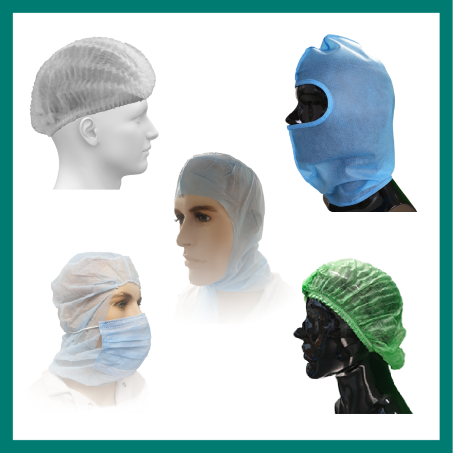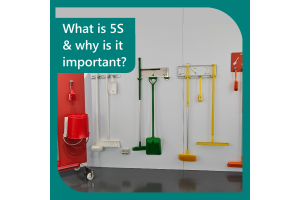What is the difference between a hairnet and a balaclava or hood?

Reliable and competent hair control is essential for all food processing companies. Requirements can vary extensively by site, and each company must decide what is suitable for their needs, and what is required to meet their audit requirements. There are many kinds of hair control available and deciding on the right product must be chosen by a balance of quality, comfort, and suitability.
Falling under the hygiene wear sector, hair control products are typically disposable. A quality product features high strength breathable material, and tight enduring elastic while completely enclosing the hair. Hair control products are not effective unless they are worn unceasingly in the production area.
What variety of hair control is there?
The most common type is typically referred to as a hairnet. These are typically a crimped piece of non-woven polypropylene with an elastic edge. They typically cover the top of the head but will often fail to provide sufficient cover over the lower sides and back of the head. Common sizes in a standard crimped hairnet are 21in and 24in.
A round hairnet, or bouffant cap, is a similar design but without the crimped elastic feature. These are also commonly available in either 21- or 24-inch varieties.
While the crimped and round hairnets are the most common throughout the Australian food industry, they typically offer the lowest level of hair control, and often are not suitable for high-risk food production areas. Typical failures of hairnets include:
Insufficient coverage: not all hair is contained within the hairnet, particularly if the hairnet is too small
Poor quality fabric: to attempt to decrease costs, manufacturers may reduce the GSM of the fabric they use, which can easily rip or tear and render the hairnet ineffectual
Loose fitting: because hairnets sit loosely over the head, they fail to press the hair down, which increases the risk of hair contamination
A second variety of hair control is a balaclava or hood. These come in a variety of different designs, including a full-face balaclava, or a hood with ties. Balaclavas and hoods typically cover a lot more of the head, and as a result also increase hair containment. A longer balaclava can be tucked into the top of clothing, which almost entirely removes the risk of hair contamination. Different thicknesses of fabric can also be used depending on the temperature of the environment they are being used in, and the length of time they are expected to be used for.
As suggested above, there are different options for maximum comfort and control, and each company must find the right combination for their needs. Other factors to consider when choosing hair control options include the colour range that is available, and the cost.
When defining the cost of hair control, it is important note to focus only on cost-per-piece, but to consider the overall cost to the business. For example, if a lower quality hairnet breaks easily, and employees regularly take two or three units, then the lower cost per unit is a false economy.
Hair control decisions: Often while making decisions like hair control, it is important to trial different options to find the most appropriate to meet your own requirements. Like with all products, there are different factors and needs to consider, and trialing the product within the actual food processing environment is often the surest way to come up with the best solution.





